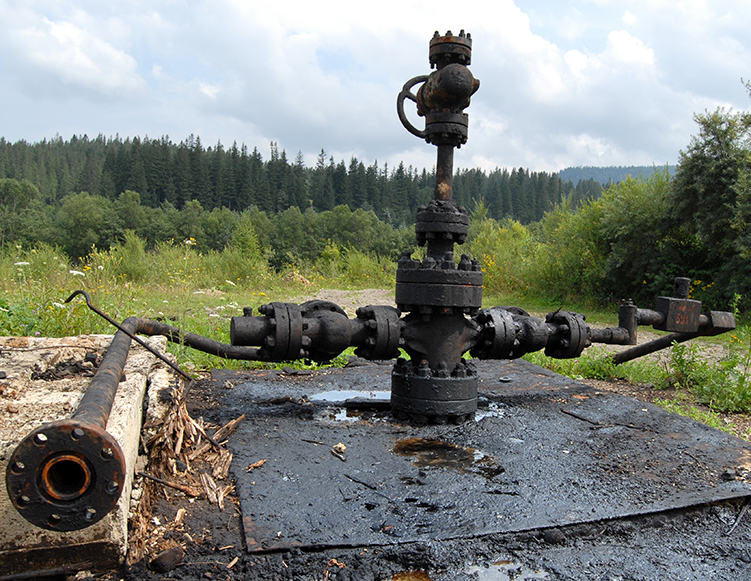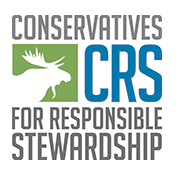 If you’ve noticed your utility bills skyrocketing, you’re not alone. Gas and electric bills across the state have been rising at an unprecedented rate over the past several years. And while some of this has been due to natural gas prices and hotter weather, most of it is because big monopoly utilities like NV Energy and Southwest Gas are being allowed to game the system. Here in Nevada, the Public Utility Commission is supposed to provide a check on utility rates, and to balance customer and utility interests. Instead, the PUC is letting these monopolies run wild with one record-breaking rate hike after another. In April, the PUC approved a record $59 million rate increase for Southwest Gas, which is $20 million higher than its previous record hike in 2020. This is despite Southwest Gas reporting a first-quarter net income ($98.5 million) that is more than double that of its first quarter in 2023 ($45.9 million), and a record 12-month operating margin of $1.3 billion. The hike also comes as SWG customers were already reeling from other recent SWG hikes. Even before this latest hike, customers reported their gas bills shooting up more than 300% in a single month. Utilities in Nevada are allowed to make rate adjustments every three months, and those are in addition to the hikes from general rate cases. While average Nevadans are getting hammered by higher and higher gas bills, Southwest Gas officers and shareholders — most of who reside outside of Nevada — are getting richer and richer. And it’s more than just Southwest Gas that keeps bellying up to the PUC...
If you’ve noticed your utility bills skyrocketing, you’re not alone. Gas and electric bills across the state have been rising at an unprecedented rate over the past several years. And while some of this has been due to natural gas prices and hotter weather, most of it is because big monopoly utilities like NV Energy and Southwest Gas are being allowed to game the system. Here in Nevada, the Public Utility Commission is supposed to provide a check on utility rates, and to balance customer and utility interests. Instead, the PUC is letting these monopolies run wild with one record-breaking rate hike after another. In April, the PUC approved a record $59 million rate increase for Southwest Gas, which is $20 million higher than its previous record hike in 2020. This is despite Southwest Gas reporting a first-quarter net income ($98.5 million) that is more than double that of its first quarter in 2023 ($45.9 million), and a record 12-month operating margin of $1.3 billion. The hike also comes as SWG customers were already reeling from other recent SWG hikes. Even before this latest hike, customers reported their gas bills shooting up more than 300% in a single month. Utilities in Nevada are allowed to make rate adjustments every three months, and those are in addition to the hikes from general rate cases. While average Nevadans are getting hammered by higher and higher gas bills, Southwest Gas officers and shareholders — most of who reside outside of Nevada — are getting richer and richer. And it’s more than just Southwest Gas that keeps bellying up to the PUC...
 PRESS RELEASE October 24, 2023 CRS Releases “Restoring Accountability” Follow-up Report on Taxpayer Exposure from Orphaned Oil and Gas Wells Conservatives for Responsible Stewardship (CRS), a national grassroots organization with more than 23,000 members, has produced a new report following up on its 2021 report Broken Promises, which detailed the staggering taxpayer exposure from orphaned and abandoned oil and gas wells. “Despite agreeing, as a condition of their drilling permit, to fully clean up and plug well sites once they are finished using them, oil and gas companies regularly skip out on that obligation, leaving us taxpayers on the hook for billions of dollars in clean-up costs,” explained CRS president David Jenkins. This new report, with updated data, underscores how this fiscal burden on taxpayers continues to grow and explains how long overdue new rules proposed by the Department of Interior (RIN 1004–AE80) to significantly increase its oil and gas program bonding requirements can help. In Broken Promises, we reported that at the end of FY2020, there were more than 96,000 “producible and service wells” on federal public lands, which could leave U.S. taxpayers on the hook for as much as $13.7 billion in future clean-up costs. Since then, BLM has approved more than 11,200 additional permits for oil and gas companies to drill new wells on federal public lands—wells that, without federal bonding reform in place, potentially exposing U.S. taxpayers to an additional $1.6 billion more in clean-up costs. Taxpayers could eventually have to pony up as much as $15 billion, and that does not account for any potential future wells from the 34,000 oil and gas leases...
PRESS RELEASE October 24, 2023 CRS Releases “Restoring Accountability” Follow-up Report on Taxpayer Exposure from Orphaned Oil and Gas Wells Conservatives for Responsible Stewardship (CRS), a national grassroots organization with more than 23,000 members, has produced a new report following up on its 2021 report Broken Promises, which detailed the staggering taxpayer exposure from orphaned and abandoned oil and gas wells. “Despite agreeing, as a condition of their drilling permit, to fully clean up and plug well sites once they are finished using them, oil and gas companies regularly skip out on that obligation, leaving us taxpayers on the hook for billions of dollars in clean-up costs,” explained CRS president David Jenkins. This new report, with updated data, underscores how this fiscal burden on taxpayers continues to grow and explains how long overdue new rules proposed by the Department of Interior (RIN 1004–AE80) to significantly increase its oil and gas program bonding requirements can help. In Broken Promises, we reported that at the end of FY2020, there were more than 96,000 “producible and service wells” on federal public lands, which could leave U.S. taxpayers on the hook for as much as $13.7 billion in future clean-up costs. Since then, BLM has approved more than 11,200 additional permits for oil and gas companies to drill new wells on federal public lands—wells that, without federal bonding reform in place, potentially exposing U.S. taxpayers to an additional $1.6 billion more in clean-up costs. Taxpayers could eventually have to pony up as much as $15 billion, and that does not account for any potential future wells from the 34,000 oil and gas leases...
 The Endangered Species Act (ESA) turns 50 years old this year. The law, which was passed in 1973 by overwhelming bipartisan majorities in Congress (unanimous in the Senate) and signed into law by President Nixon, stands as an enduring testament that we can rise above our lesser instincts and be good stewards of what President Reagan referred to as “this magical planet that God gave us.” From the deliberate and cruel efforts to eradicate wolves and grizzly bears from the Lower 48, to the carelessness that drove the bald eagle, our national symbol, to the brink of extinction, history is full of examples where mankind has been intolerant of wildlife and/or ignorant of its needs. Thanks to the ESA, bald eagle numbers have recovered across the Lower 48, going from a low of 1,000 or less in the 1950s to more than 300,000 today. Wolves and grizzly bears have also rebounded significantly, with healthy, sustainable populations in several states. Unfortunately, too many people fail to recognize the ESA as the conservative law it is. President Reagan once rhetorically asked, “What is a conservative after all, but one who conserves?” Conservative political theorist Russell Kirk went even further, writing in a Baltimore Sun op-ed, “nothing is more conservative than conservation.”Wildlife, from apex predators to the tiniest insects, play an essential role in keeping the earth’s life-sustaining ecology healthy. Bears and wolves, by preying primarily on weak and sick moose, deer, or elk, make the populations of those ungulates healthier. And pollinators, such as bees and butterflies, are essential to our food crops. From my personal experiences, I have come to...
The Endangered Species Act (ESA) turns 50 years old this year. The law, which was passed in 1973 by overwhelming bipartisan majorities in Congress (unanimous in the Senate) and signed into law by President Nixon, stands as an enduring testament that we can rise above our lesser instincts and be good stewards of what President Reagan referred to as “this magical planet that God gave us.” From the deliberate and cruel efforts to eradicate wolves and grizzly bears from the Lower 48, to the carelessness that drove the bald eagle, our national symbol, to the brink of extinction, history is full of examples where mankind has been intolerant of wildlife and/or ignorant of its needs. Thanks to the ESA, bald eagle numbers have recovered across the Lower 48, going from a low of 1,000 or less in the 1950s to more than 300,000 today. Wolves and grizzly bears have also rebounded significantly, with healthy, sustainable populations in several states. Unfortunately, too many people fail to recognize the ESA as the conservative law it is. President Reagan once rhetorically asked, “What is a conservative after all, but one who conserves?” Conservative political theorist Russell Kirk went even further, writing in a Baltimore Sun op-ed, “nothing is more conservative than conservation.”Wildlife, from apex predators to the tiniest insects, play an essential role in keeping the earth’s life-sustaining ecology healthy. Bears and wolves, by preying primarily on weak and sick moose, deer, or elk, make the populations of those ungulates healthier. And pollinators, such as bees and butterflies, are essential to our food crops. From my personal experiences, I have come to...
 With economy-wide inflation still plaguing us and stretching paychecks thin, we should be paying extra close attention to energy prices. The cost of energy affects the price of almost everything. In the transportation sector, high fuel prices increase the costs of getting products to market or directly to your home. High electric and natural gas bills contribute to inflation not only by raising the cost of doing business, but also by directly increasing the cost of powering your home. In both cases, the higher prices can be attributed largely to the fact that fossil fuels are global commodities with their price set by international markets. That means that events virtually anywhere in the world can increase our energy costs here in the United States. The recent spike in these energy costs are tied directly to Russia’s invasion of Ukraine. Sanctions on Russian energy in response to the invasion—and retaliatory measures by Russia—have tightened oil supplies and greatly increased Europe’s demand for U.S. natural gas. Russia is a major energy producer, and over the years, Europe became heavily dependent on Russia for its oil and natural gas supplies. Europe has finally woken up to the strategic vulnerability posed by being over reliant on Russian energy, and is now turning to the U.S., the world’s leading producer of natural gas (Russia is second) to help wean itself off of Russian natural gas. That has dramatically changed the natural gas market here. For a long time we had to use all of the gas we produce domestically because there was no way to ship it overseas, which kept our natural gas prices...
With economy-wide inflation still plaguing us and stretching paychecks thin, we should be paying extra close attention to energy prices. The cost of energy affects the price of almost everything. In the transportation sector, high fuel prices increase the costs of getting products to market or directly to your home. High electric and natural gas bills contribute to inflation not only by raising the cost of doing business, but also by directly increasing the cost of powering your home. In both cases, the higher prices can be attributed largely to the fact that fossil fuels are global commodities with their price set by international markets. That means that events virtually anywhere in the world can increase our energy costs here in the United States. The recent spike in these energy costs are tied directly to Russia’s invasion of Ukraine. Sanctions on Russian energy in response to the invasion—and retaliatory measures by Russia—have tightened oil supplies and greatly increased Europe’s demand for U.S. natural gas. Russia is a major energy producer, and over the years, Europe became heavily dependent on Russia for its oil and natural gas supplies. Europe has finally woken up to the strategic vulnerability posed by being over reliant on Russian energy, and is now turning to the U.S., the world’s leading producer of natural gas (Russia is second) to help wean itself off of Russian natural gas. That has dramatically changed the natural gas market here. For a long time we had to use all of the gas we produce domestically because there was no way to ship it overseas, which kept our natural gas prices...
 People often do not realize just how much of the food we eat only exists because of insect pollinators, especially bees. Bees are in fact essential in the production of at least a third of our food. This includes most of the fruits, nuts, vegetables, and seeds that are essential to our diets. That is why the fact that the American Bumblebee has completely vanished from eight states (Maine, Rhode Island, New Hampshire, Vermont, Idaho, North Dakota, Wyoming, and Oregon) should be a huge wake-up call for all of us. And this problem is not just limited to those states. In just the past two decades, the bumblebee population across the U.S. has declined by nearly 90 percent. A similar decline is happening with honeybees. Beekeepers across the country reported losing more than 45 percent of their managed honeybee colonies from April 2020 to April 2021. Pollinators directly contribute a whopping $24 billion to the U.S. economy. That number nearly doubles when you add in their indirect contribution to other agricultural products like milk and beef. Globally, 75 percent of the top 115 food crops depend on pollinators. In the Bible verse (Matthew 25) where Jesus talks about our duty to care for “the least of these,” meaning the less fortunate, His words seems equally applicable regarding our obligation to protect pollinators. Without these tiny pollinators, many will suffer. Crop scarcity not only leads to famine in parts of the world, it also will cause food shortages and prices to skyrocket here at home. Why is this happening? There are several reasons. Habitat loss and a changing climate play...
People often do not realize just how much of the food we eat only exists because of insect pollinators, especially bees. Bees are in fact essential in the production of at least a third of our food. This includes most of the fruits, nuts, vegetables, and seeds that are essential to our diets. That is why the fact that the American Bumblebee has completely vanished from eight states (Maine, Rhode Island, New Hampshire, Vermont, Idaho, North Dakota, Wyoming, and Oregon) should be a huge wake-up call for all of us. And this problem is not just limited to those states. In just the past two decades, the bumblebee population across the U.S. has declined by nearly 90 percent. A similar decline is happening with honeybees. Beekeepers across the country reported losing more than 45 percent of their managed honeybee colonies from April 2020 to April 2021. Pollinators directly contribute a whopping $24 billion to the U.S. economy. That number nearly doubles when you add in their indirect contribution to other agricultural products like milk and beef. Globally, 75 percent of the top 115 food crops depend on pollinators. In the Bible verse (Matthew 25) where Jesus talks about our duty to care for “the least of these,” meaning the less fortunate, His words seems equally applicable regarding our obligation to protect pollinators. Without these tiny pollinators, many will suffer. Crop scarcity not only leads to famine in parts of the world, it also will cause food shortages and prices to skyrocket here at home. Why is this happening? There are several reasons. Habitat loss and a changing climate play...
 Way back in 1987, President Ronald Reagan pushed through an international treaty to phase out the use of chlorofluorocarbons (CFCs), chemicals that scientists suspected of eroding the earth’s protective ozone layer. That treaty, called the Montreal Protocol, has been the most successful environmental treaty in history. In fact, because of Reagan’s leadership, the ozone hole over Antarctica is healing. According to NASA, the hole should completely vanish in about 50 years. Today, however, we now know that the chemicals developed to replace CFC-based refrigerants, hydrofluorocarbons (HFCs) harm the atmosphere in a different way. They are extremely potent greenhouse gases. The most commonly used HFC is 3,790 times more potent than carbon dioxide. Back in December (2020), a funding bill passed by Congress included a bipartisan climate agreement to phase-down production and consumption of HFC super-pollutants. That legislation, which authorizes the Environmental Protection Agency (EPA) to slash HFC emissions, passed and was signed into law by then President Trump. Now the Biden administration is following through on that. Its new EPA rule seeks to decrease U.S. production and use of HFCs by 85% over the next 15 years. That is real progress, but HFCs and our warming climate are global problems, not simply something we can solve alone. Other countries must follow our lead—and that is where Reagan’s Montreal Protocol comes back into play. Kigali Amendment In 2016, the United States and other protocol signatories drafted and approved the Kigali Amendment. The Kigali Amendment is a global pact under the Montreal Protocol that focuses on the phase out of climate warming HFCs. The United States signed the amendment in 2016...
Way back in 1987, President Ronald Reagan pushed through an international treaty to phase out the use of chlorofluorocarbons (CFCs), chemicals that scientists suspected of eroding the earth’s protective ozone layer. That treaty, called the Montreal Protocol, has been the most successful environmental treaty in history. In fact, because of Reagan’s leadership, the ozone hole over Antarctica is healing. According to NASA, the hole should completely vanish in about 50 years. Today, however, we now know that the chemicals developed to replace CFC-based refrigerants, hydrofluorocarbons (HFCs) harm the atmosphere in a different way. They are extremely potent greenhouse gases. The most commonly used HFC is 3,790 times more potent than carbon dioxide. Back in December (2020), a funding bill passed by Congress included a bipartisan climate agreement to phase-down production and consumption of HFC super-pollutants. That legislation, which authorizes the Environmental Protection Agency (EPA) to slash HFC emissions, passed and was signed into law by then President Trump. Now the Biden administration is following through on that. Its new EPA rule seeks to decrease U.S. production and use of HFCs by 85% over the next 15 years. That is real progress, but HFCs and our warming climate are global problems, not simply something we can solve alone. Other countries must follow our lead—and that is where Reagan’s Montreal Protocol comes back into play. Kigali Amendment In 2016, the United States and other protocol signatories drafted and approved the Kigali Amendment. The Kigali Amendment is a global pact under the Montreal Protocol that focuses on the phase out of climate warming HFCs. The United States signed the amendment in 2016...









